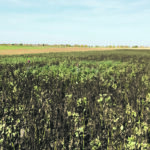Producers are urged to keep close watch on their fields this season as a way to control pea aphids in their pulse crops
Pea aphids. If you’re a western Canadian pulse crop producer and you haven’t had to deal with them yet, there’s a good chance you will in the near future. Tyler Wist, an entomologist with Agriculture Canada, said the pea aphid has become one of the most prevalent pests affecting pulse crops in Western Canada. The […] Read moreStories by Brian Cross
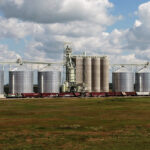
Canola crusher planned for southern Sask.
Another company has announced plans to build a new canola processing facility in Saskatchewan. Ceres Global Ag Corp. announced plans today to construct a $350 million canola crushing facility at Northgate, Sask., about 250 kilometres southeast of Regina. The proposed state-of-the-art facility will have the capacity to process between 1.1 million and 1.2 million tonnes […] Read more
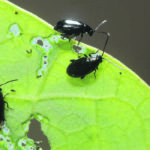
Farmers urged to keep watch for flea beetles
Insect traps monitored by Saskatchewan Agriculture have shown significant numbers over the past couple of weeks
It’s never too early in the growing season to start scouting for yield-robbing insects. James Tansey, a pest management specialist with Saskatchewan Agriculture, said growers should be on the lookout for flea beetles as soon as canola seedlings begin to emerge. Striped flea beetles can be voracious feeders and are typically active before the cruciferous […] Read more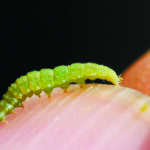
Pest monitoring network helps track potential threats
Website includes risk maps and information about prevalent species, scouting procedures and economic thresholds
In today’s digital world, there are millions of internet sources offering information on just about every topic under the sun. For prairie grain and oilseed growers, one of the most useful sources of information is the Prairie Pest Monitoring Network at www.prairiepest.ca. Growers can visit the website and subscribe to PPMN’s weekly pest updates. The […] Read more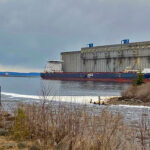
Brisk exports cut into grain, oilseed stocks
Statistics Canada reports that global demand remains strong as stocks of all major crops reach lower levels than last year
The amount of Canadian canola delivered to export terminals at the Port of Vancouver averaged almost 170,000 tonnes a week in April, easily surpassing the pace of deliveries in April 2020. According to data from the Canadian Grain Commission, nearly 675,000 tonnes of canola were delivered to Vancouver export facilities in the four-week period ending […] Read more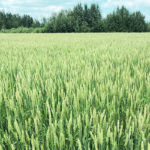
U of A signs wheat deal with farm groups
Canadian Wheat Research Coalition contributes $2 million to the University of Alberta’s breeding program over five years
The University of Alberta has signed a new core funding agreement with the Canadian Wheat Research Coalition, which represents provincial wheat commissions in Alberta, Saskatchewan and Manitoba. Under the new deal announced May 3, the U of A wheat breeding program headed by Dean Spaner will receive core funding worth $2 million over about five […] Read more
Federal grain car fleet gets smaller
The number of grain cars in Canada’s aging federal hopper car fleet continues to shrink as more cars are removed from service due to age, damage and rising maintenance costs. According to the federal government’s Hopper Car Fleet Annual Report for 2019, the number of federal hoppers in service dropped to 7,193 cars by Jan. […] Read more

Research to probe weeds for genetic treasure
International project hopes to develop high-quality genome maps for some of the world’s most costly and invasive species
Chemical manufacturers, life science companies and scientists specializing in weed biology and genomics are teaming up to learn more about the genetic makeup of some of the world’s most ubiquitous and costly weeds. The International Weed Genomics Consortium will be led by weed scientists at Colorado State University in Fort Collins, Colo., and will involve […] Read more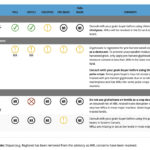
Diquat use as pulse desiccant eased
Ag commodity organizations in Canada are encouraging grain, pulse and oilseed producers to review an updated product advisory chart identifying farm chemicals that have the potential to cause marketing and trade disruptions in 2021. The Keep It Clean advisory chart can be viewed online at keepitclean.ca/product-advisory. It is aimed at ensuring that crops grown in […] Read more
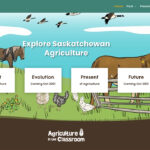
Ag in the Classroom launches website
Agriculture in the Classroom Saskatchewan has launched a website designed to help elementary school students learn more about agriculture in the province. ExploreSaskAg.ca uses interactive information, colourful illustrations and real-life photos to teach Saskatchewan students about the past, present and future of agriculture. “What started as a revamp of a children’s website from many years […] Read more


